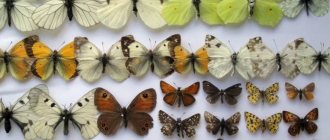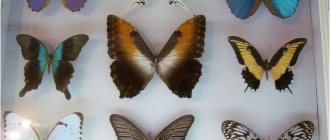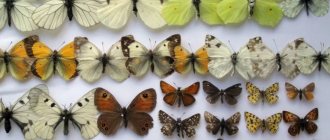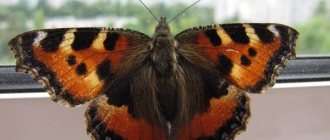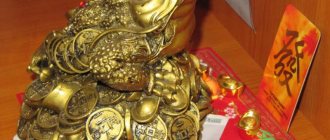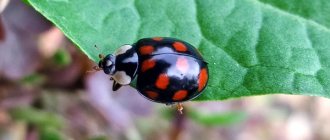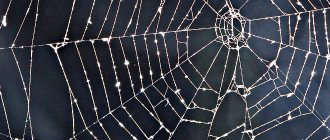How to dry an insect
So summer is over. Leaves are falling. Let's better talk about how to take at least a little bit of summer with you. You can do this in different ways, of course, but the surest way is to leave good and unforgettable impressions of your summer vacation. But since I am not a professor of psychology and I don’t know what memory will be pleasant for you, I will tell you about simpler and more material things that will leave you with that very particle of summer. In this article we will talk about how to dry an insect, and then decorate such an interesting souvenir.
Let's get started. You, of course, can do whatever is most convenient for you, but I will start by making a frame. Here's what we need for this: - plywood or wood - glue - glass - cardboard - polystyrene foam - paper
It is necessary to cut 4 bars from plywood or wood, which will later serve as the basis for the frame. All 4 bars should be the same width, both on the front and sides, the length may vary depending on what kind of frame you need. Trim the ends of the bars at a 45° angle as shown in (A). The sawing places are marked in red; the smoother you saw off, the better the edges of your bars will meet, forming the future frame. If you sawed off correctly, the gaps in the convergence of the bars will be almost invisible.
Let us now turn to figure (B). It shows a block in which you need to make cuts. The cuts are made on the inside of the bar, the letters “L”, “B” and “O” indicate the Front side, Side side and Back side (back), respectively. A longer slot is necessary for inserting glass into it, so it should be slightly larger than the thickness of the glass so that the glass can be inserted easily and held firmly. A short slot is needed to insert the back wall, on which our dried insect will be placed. The letter "K" in figures (A) and (B) indicates fastenings. The fasteners are thin metal plates that can be easily bent at any time and the back wall of the frame can be removed. The plates are inserted into the bars we made. The main part of the frame is ready.
Let's start making the back wall.
The back wall should fit completely into the slot we made earlier. As you can see from picture (C), there is a slot in the center of the wall into which the foam “P” is attached. The foam plate should be slightly larger than the slot. It must be glued from the back of the back wall, i.e. the side that will be closer to the wall when we hang the frame. The back wall is made of thin plywood or cardboard, after which some beautiful “T” fabric is glued to it, this will give the frame a more presentable look.
Insert the glass into the frame and glue 4 bars with PVA glue, let the glue dry. The frame is almost ready. After the glue has dried, clean the frame again with sandpaper. Cover the frame with furniture stain, this will give it a brown tint. Next, you need to coat the frame several times with clear varnish; between each coat of varnish, wait until the varnish dries properly. After the varnish has dried, go over the frame with fine-grained sandpaper. Repeat coating 2 times. For the 3rd time, simply coat the frame with varnish and let it dry. The frame is ready.
Well, now let's get down to the most important thing.
If you have already caught an insect, then that’s just great. The caught insect is killed in the stain. We take a jar with a wide neck, put strips of paper on the bottom (if you are going to dry butterflies, then strips of paper are not needed), close the jar with a lid, to the underside of which attach a cotton swab moistened with ether, leave the jar closed for several hours. After this, the insects are immediately straightened and pricked for the first day, before they dry out, otherwise some limbs will break. Insects are pinned onto entomological pins. Pins are stuck vertically into the chest of butterflies, flies, dragonflies, bees, wasps, or into the right elytra of beetles, grasshoppers, and small bugs. Wait until the insects dry out. The wings of butterflies are carefully spread on the so-called “spreaders”. First, one wing is secured with strips of paper, then the other. The legs and antennae are placed as close to the body of the insect as possible so that they do not break.
Now we place the dried insect on the foam back wall of the frame. We glue a strip of paper with information about it to the plate under the insect. We insert the back wall, but with the insect, into the frame we made. We bend the fasteners so that the back wall is firmly held in the frame. Our souvenir is ready.
A home collection of insects will increase interest in you when any guests arrive. Such products not only decorate your home, but are also a unique gift for loved ones.
Learn to make things with your own hands.
My secret
Drying an insect
, you can not only leave a small piece of summer and preserve good impressions of your vacation, but also create an original souvenir. Let's talk about how to do it right. It's better to start by making a frame. To do this you will need wood or plywood, cardboard, glass, foam, paper and glue. First, 4 bars are cut out of wood or plywood - the basis for the frame. They should have the same width both on the front side and on the sides, and the length can be any. The ends of the bars must be cut at an angle of 45°. The smoother they are sawn off, the better the edges of the bars will meet when forming the future frame. It is necessary to make two cuts on the inside of the block along its entire length. One cut is made to insert glass into it. It should be slightly wider than the thickness of the glass so that the glass can be inserted easily and hold well. Another slot is needed to insert the back wall with the dried insect placed on it. The entire structure is secured using fasteners - thin metal plates pre-inserted into manufactured bars. To reach the back wall of the frame, these plates can be easily bent. The back wall is made of cardboard or thin plywood. In the center of the wall you need to make a rectangular cutout into which a foam plastic plate slightly larger than the cutout is attached, glued from the back of the back wall. Next, a beautiful fabric is glued to the back wall to give the frame a beautiful look. After this, we insert the glass into the frame, glue the bars with PVA glue and after the glue dries, we clean the frame with sandpaper. The frame is coated with furniture stain to give it a brown tint, and then several times with colorless varnish. Moreover, before applying each coat of varnish, you need to wait until the previous one has dried. When the varnish is dry, the frame is treated with fine-grained sandpaper. The coating is repeated 2 times, and the 3rd time the frame is simply varnished. The caught insect is killed in the stain. Strips of paper are placed at the bottom of a wide-necked jar, which are not needed when drying butterflies. The jar is closed with a lid, to which a cotton swab moistened with ether is attached to the bottom side, and left closed for several hours. Then the insects need to be straightened out immediately and pinned onto entomological pins before they dry out. For butterflies, flies, bees, wasps and dragonflies, pins are stuck vertically into the chest, and for beetles, grasshoppers and bedbugs into the right elytra. Next, wait for the insects to dry. The wings of the butterflies are carefully straightened, secured with strips of paper. To prevent the legs and antennae from breaking, they need to be positioned closer to the insect’s body. Next, we place the dried insect on the foam plastic of the back wall of the frame and glue a strip of paper with information underneath it. We insert the back wall with the insect into the finished frame and bend the fasteners.
When dried, some insects greatly change their color and fade. You caught several bright red ladybugs, killed them, and laid them on mattresses. After a while we got ready to prick the beetles, opened the mattress - how they had changed! Where did the magnificent red color go?! The beetles acquired a dull, dirty-brown color. When dried, green grasshoppers turn brown, and dragonflies lose their blue stripes and spots. Is it possible to prevent color change and fading in dry insects? Unfortunately, there is still no method of pickling and drying insects that would preserve their original color completely and without changes. We are not even talking about the fact that in alcohol or formalin during long-term storage, insects generally lose any semblance of their natural color. However, there are some ways to preserve color close to natural, although they are rather imperfect. Leaf beetles and ladybugs change their color much less if they are marinated not with ether or chloroform, but with snuff. To prevent the disappearance of the bright pattern on the sides of the pectorals and abdomen of dragonflies, they are treated with acetone. As soon as the insect falls asleep in the stain, it is taken out, holding it by the wings folded together, and lowered into acetone so that the head does not submerge in the liquid. The dragonfly is kept in acetone for about 2 hours, after which it is transferred to ether for an hour. The insect removed from the ether is dried and placed on a mattress. Preserving the pattern on the chest of dragonflies is important not only to better preserve its appearance, but also to make it easier to identify later. Coloration is an important identifying feature for many of these insects. It is almost impossible to avoid browning of the color of locusts, grasshoppers and other orthoptera. The only thing that can be advised here is to dry them as quickly as possible.
Mummification of larvae and pupae
To prepare biological collections, it is often necessary to prepare a dry preparation of a particular animal. An example would be a collection dedicated to the development of an insect. All stages of its development should be located next to the dried and straightened adult insect. Larvae stored in bottles or test tubes with preservative liquid, of course, make less impression than dry objects. In some cases, larvae and pupae that do not have a dense chitinous covering cannot be dried as easily as adult insects, but mummies can be prepared from them, that is, mummified. Mummification takes a long time, so it is convenient to make mummies from a large number of animals at once. Usually only white larvae and pupae are mummified, since the colored ones lose their color. To work, you will need alcohol of 60, 75, 85, 96 and 100 degrees (for the preparation of alcohols of the required strength, see page 120), xylene, small tweezers, several salt shakers closed with glass. Instead of salt shakers, you can use any small vessels with a wide neck. Before killing a caterpillar or other larva intended for mummification, it should be thoroughly fed. Hungry caterpillars and other larvae may shrink during subsequent processing. The fed larva is pickled and scalded with boiling water, after which it is successively placed in alcohols of increasing strength: 60, 75 degrees, etc. The larva is kept in each alcohol for 1 to 2 days, depending on its size. The latter alcohol is absolute, that is, it contains no water at all. It needs to be changed once or twice. While in alcohol, the animal's tissues become dehydrated. The more thoroughly the dehydration is carried out, the better the next operation - degreasing. To degrease, the larva is placed in xylene, where it is kept for approximately the same time as in absolute alcohol. When removed from xylene, the larva becomes dry and hard. Now it can be stored together with dried adult insects.
When transferring an object from one liquid to another, it is picked up with tweezers. In this case, you should try to keep the larva in the air for as little time as possible, since this will allow the moisture in the air to penetrate into it. All vessels in which mummification is carried out must be tightly closed (Fig. 34). There should be enough liquid in each of them so that it completely covers the larva. Both alcohols and xylene should be replaced with fresh ones from time to time, as moisture, grease, and dirt accumulate in them. Sometimes the larvae, when passed through alcohol, shrink and lose their shape. Most often this is explained by the fact that the change in alcohol strength turned out to be too drastic for them. If for large and rough larvae it is enough to use only four alcohols - 60, 70, 96 and 100 degrees, then more delicate animals have to be passed through six - eight alcohols, for example: 45, 50, 55, 60, 70, 80, 96 and 100 degrees. In conclusion, it is necessary to say how to prepare absolute alcohol from commercial alcohol (96°). To extract water, dehydrated (white) copper sulfate is added to alcohol. Dehydration of vitriol is achieved by calcining it - the blue crystals lose color and turn into white powder. About a third of the volume of a jar with a ground stopper is filled with copper sulfate powder, after which alcohol is added to the jar. The vitriol greedily absorbs water and turns blue. There is practically no water left in alcohol. This alcohol is poured into another vessel containing white, dehydrated copper sulfate. Be sure to store absolute alcohol together with vitriol in a tightly sealed container, making sure that the vitriol under the alcohol remains white at all times.
Advice: Large and medium-sized ones with a more or less dense chitinous cover are stored dry.
The site has:
Preparation of wet preparations Methods of designing zoological collections Features of collecting aquatic animals Collecting arachnids for the collection Spreading butterflies for the collection
Fried bamboo worms
Where: Thailand, China, Latin America For Thais, a plate of bamboo worms fried in oil is as traditional a way to start lunch as a salad or soup for Europeans. Their taste and texture are a little reminiscent of popcorn, although they do not have any special pronounced taste, but they are very nutritious. In fact, these are not worms at all, but larvae of grass moths from the grass moth family (Crambidae), living in bamboo. Traditionally they are harvested by cutting bamboo stalks, but more recently they have been grown commercially on farms and packaged in bags like chips. Bizarre Food products can, for example, be bought in England. In addition to Thailand, bamboo worms are eaten with pleasure in China and in the Amazon River basin.
Shish kebab from longhorned beetle larvae
Where: Eastern Indonesia Longhorned beetles, large and shiny beetles with long antennae, are distributed throughout the world, and there are many of them in Russia. In our country they are also called woodcutter beetles, in the English-speaking world - capricorn beetles. Longhorned beetle larvae, found in the roots of sago palms, are a very popular village food in Eastern Indonesia. For the sake of fatty and juicy larvae, Indonesians sometimes cut down small palm groves, and then, carefully stringing them onto twigs, roast the larvae over the fire. They have tender flesh, but a very dense skin that takes a long time to chew. The maggots taste like greasy bacon. The larvae have another use: villagers use them as ear brushes - a live larva is inserted into the ear, held by the tail with your fingers, and it quickly eats away the ear wax.
Cheese with cheese fly larvae
Where: Sardinia This cheese is proof that insects are eaten not only in Africa and Asia. Casu marzu is an important Sardinian specialty: cheese made from unpasteurized goat's milk with live larvae of the cheese fly Piophila casei. For most cheese lovers, casu marzu is not just mature cheese or blue cheese, but completely rotten cheese with worms. Strictly speaking, this is what it is: this is ordinary pecorino, from which the top layer is cut off so that the cheese fly can easily lay its eggs in it. The larvae that then appear begin to eat the cheese from the inside - the acid contained in their digestive system decomposes the fats in the cheese and gives it a specific softness. Some of the liquid even flows out - it is called lagrima, which means “tear”. In Sardinia, casu marzu is considered an aphrodisiac and is traditionally eaten along with worms. Moreover, casu marzu is considered safe to eat only while the larvae are alive. This is not easy to do: disturbed larvae, reaching a centimeter in length, can jump out of the cheese to a height of 15 cm - many cases have been described when they got into the eye of someone who tried the cheese. Therefore, lovers of casu marzu often eat this cheese with glasses or, spreading it on bread, cover the sandwich with their hand. However, removing larvae from cheese is not considered a crime. The easiest way is to put a piece of cheese or a sandwich in a paper bag and close it tightly: the suffocating larvae begin to jump out. When the shooting in the bag stops, the cheese can be eaten. Of course, casu marzu does not meet any hygienic standards of the European Union and was banned for a long time (it could only be bought on the black market at a price twice the price of regular pecorino). But in 2010, the casu marzu was recognized as a cultural property of Sardinia and allowed again.
Dried mopane caterpillars with onions
Where: South Africa Dried caterpillars of Gonimbrasia belina, a South African species of mopane moth, are an important source of protein for South Africans. Collecting these caterpillars in Africa is quite a serious business: in supermarkets and markets you can find both dried and hand-smoked caterpillars and pickled caterpillars rolled into tins. To cook a caterpillar, you first need to squeeze out its green intestines (usually the caterpillars are simply squeezed in your hand, less often they are cut lengthwise, like a pea pod), and then boiled in salted water and dried. Sun-dried or smoked caterpillars are very nutritious, weigh almost nothing and have a long shelf life, but do not have much flavor (they are most often compared to dried tofu or even dry wood). Therefore, they are usually fried until crunchy along with onions, added to stews, stewed in various sauces, or served with sadza corn porridge. However, very often mopane are eaten raw, whole or, as in Botswana, after tearing off the head. They taste like tea leaves. Caterpillars are collected by hand, usually done by women and children. And if they belong to anyone in the forest, then collecting caterpillars on neighboring trees is considered bad manners. In Zimbabwe, women even mark trees with their caterpillars or move young caterpillars closer to home, setting up unique plantations.
Boiled wasps
Where: Japan The older generation of Japanese still respects wasps and bees, prepared in a variety of ways. One such dish is hatinoko, which is bee larvae boiled with soy sauce and sugar: a translucent, sweetish caramel-like mass that goes well with rice. Wasps are also prepared in the same way - a dish with them is called jibatinoko. For older Japanese people, this dish reminds them of the post-war years and the rationing system, when wasps and bees were especially actively eaten in Japan. It is in steady demand in Tokyo restaurants, even if only as a nostalgic attraction. In general, hatinoko and jibatinoko are considered a rather rare specialty of Nagano Prefecture. Fried black wasps are a little more common and are sometimes served with beer in Japanese taverns. Another specialty, rice crackers with earthen wasps, is made in the village of Omachi. These are small cookies with adult wasps stuck to them - each one contains from 5 to 15 wasps. Japanese dishes made from wild wasps and bees are not cheap: it is impossible to put this business on stream; the preparation itself is quite labor-intensive. Wasp and bee hunters tie long colored threads to adult wasps and thus track their nests. However, you can also find canned bees in Japanese stores - this is usually how beekeeping farms sell their surplus.
Silkworm fried with ginger
Where: China, Korea, Japan, Thailand The city of Suzhou and its surroundings are famous not only for high-quality silk, but also for quite rare dishes made from silkworm pupae. As you know, silkworm caterpillars wrap themselves in a thin but strong silk thread. In the cocoon they grow wings, antennae and legs. Before this happens, Suzhou residents boil them, remove the cocoon, and then quickly fry them in a wok - most often with ginger, garlic and onions. However, tender larvae, crispy on the outside and soft on the inside, go well with almost any vegetables and spices. When cooked correctly, they taste like crab or shrimp meat. Silkworm larvae are no less popular in Korea. Trays of beondegi, boiled grubs with spices or steamed grubs, are found throughout the country. And stores sell canned silkworms, which must be boiled before use. They are also loved in Japan, especially in Nagato, and Japanese astrophysicist Masamichi Yamashita even suggests including silkworms in the diet of future Mars colonists.
Fried ants
Where: Mexico, Colombia, Australia, South Africa Ants are the most popular edible insects on Earth after grasshoppers. In Colombia, fried ants are even sold in movie theaters instead of popcorn. The ones most loved in Colombia are female ants with eggs. They are caught on rainy days, when water floods the anthills and the females climb out. In the simplest rustic version, they are prepared by wrapping them in leaves and holding them over the fire for a while. This is a crunchy, sweetish snack with a distinct nutty flavor. But the most delicious ants, the so-called “honey” ants, are found in Australia. They feed on sweet nectar, transporting it in swollen abdomen (in Russian-language literature they are called “ant barrels”). These transparent bubbles are considered a sweet delicacy among the Australian Aborigines. In addition, two genera of honey ants are found in South Africa and the semi-deserts of North America.
Deep fried water bugs
Where: Thailand, Vietnam, Philippines Large water bugs - insects from the Belostomatidae family - live all over the world, most of them in America, Canada and Southeast Asia. But while for Americans these are just large insects whose bites sometimes last for two weeks, in Asia they happily eat water bugs. The Asian variety, Lethocerus indicus, is the largest in the family at 12cm in length, so the Thais simply deep-fry them and serve them with plum sauce. The meat of water bugs tastes like shrimp. At the same time, in Thailand they are eaten whole, in the Philippines the legs and wings are torn off (and in this form they are served with strong drinks as a snack), and in Vietnam they are made into a very fragrant extract, which is added to soups and sauces. One drop is enough for a bowl of soup.
Grasshoppers with avocado
Where: Mexico John the Baptist, as is known, ate grasshoppers: the locusts, which he ate with wild honey, are locusts, a close relative of the grasshopper. It could be understood by Mexicans, for whom grasshoppers are practically a national food. Grasshoppers are eaten everywhere in Mexico: boiled, raw, sun-dried, fried, soaked in lime juice. The most popular dish is grasshopper guacamole: the insects are quickly fried, causing them to instantly change color from green to reddish, mixed with avocado and spread on a corn tortilla. Like any small fried insect, fried grasshopper does not have a prominent flavor and usually tastes like the oil and spices in which it was fried. The grasshoppers sold by street vendors in Southeast Asia are simply overcooked chitinous shells. In general, grasshoppers are eaten wherever insects are eaten. Grasshoppers boiled in salt water and dried in the sun are eaten in the Middle East, in China they are skewered like kebabs, and in Uganda and nearby regions they are added to soups. It is curious that in Uganda, until recently, women were not allowed to eat grasshoppers - it was believed that then they would give birth to children with deformed heads, like grasshoppers.
Dragonflies in coconut milk
Where: Bali
Dragonflies in coconut milk
Where: Bali Dragonflies can reach speeds of up to 60 km/h, so edible dragonflies are real fast food. They are caught and eaten in Bali: it is not easy to catch a dragonfly, for this they use sticks smeared with sticky tree sap. The main difficulty is to touch the dragonfly with this stick in a smooth and at the same time fast movement. Caught large dragonflies, whose wings are first torn off, are either quickly grilled or boiled in coconut milk with ginger and garlic. Dragonflies are also made into a kind of candy by frying them in coconut oil and sprinkling them with sugar.
Tarantulas baked on coals
Where: Cambodia Black-fried tarantulas, which look like varnished, charred firebrands, are a common street food in Cambodia. A successful tarantula catcher can catch up to two hundred individuals per day. They sell very quickly. Cambodian tarantulas are fried in a wok with salt and garlic - their meat tastes like a cross between chicken and fish. Large tarantulas, reaching 28 cm in diameter, are eaten in Venezuela simply by roasting them on coals. A slightly more elegant method of preparing tarantulas is used in Japan: they first tear off the spider's abdomen, then singe the hairs and quickly fry them in tempura. However, it is believed that the most delicious spiders are not tarantulas, but spiders from the Nephilidae family, which are eaten in New Guinea and Laos. These spiders taste like peanut butter when fried.
Every season has something special that inspires new games and creative ideas. So cold and slush are not a reason to give up fun autumn activities. To get started, you can use these interesting ideas; they will definitely delight your child and the whole family. So here's what to do in November. 1. Make a toy from natural materials. Together with your child, collect pine cones, twigs, berries, seeds, dry leaves and feathers in the nearest park. Create a sculpture or hanging toy from these items...
DOCTOR SUMMER
Summer can safely be called the favorite season of most Russians. But these long-awaited months usually fly by very quickly (and in some regions - simply rapidly), so you want to make the most of them for the benefit of yourself and your body. And it's quite simple! BREATHE? EASILY! If you happen to catch a runny nose in the summer (due to a cold or short-term hypothermia under the influence of air conditioners), then do not rush to “quarantine” at home alone with a bottle of vasoconstrictor drops. And in general, you don’t have to stay at home: by avoiding crowded places, you can…
So summer is over. Leaves are falling. Let's better talk about how to take at least a little bit of summer with you. You can do this in different ways, of course, but the surest way is to leave good and unforgettable impressions of your summer vacation.
But since I am not a professor of psychology and I don’t know what memory will be pleasant for you, I will tell you about simpler and more material things that will leave you with that very particle of summer. In this article we will talk about how to dry an insect, and then decorate such an interesting souvenir.
Let's get started. You, of course, can do whatever is most convenient for you, but I will start by making a frame. Here's what we need for this: - plywood or wood - glue - glass - cardboard - polystyrene foam - paper
It is necessary to cut 4 bars from plywood or wood, which will later serve as the basis for the frame. All 4 bars should be the same width, both on the front and sides, the length may vary depending on what kind of frame you need. Trim the ends of the bars at a 45° angle as shown in (A). The sawing places are marked in red; the smoother you saw off, the better the edges of your bars will meet, forming the future frame. If you sawed off correctly, the gaps in the convergence of the bars will be almost invisible.
Let us now turn to figure (B). It shows a block in which you need to make cuts. The cuts are made on the inside of the bar, the letters “L”, “B” and “O” indicate the Front side, Side side and Back side (back), respectively. A longer slot is necessary for inserting glass into it, so it should be slightly larger than the thickness of the glass so that the glass can be inserted easily and held firmly. A short slot is needed to insert the back wall, on which our dried insect will be placed. The letter "K" in figures (A) and (B) indicates fastenings. The fasteners are thin metal plates that can be easily bent at any time and the back wall of the frame can be removed. The plates are inserted into the bars we made. The main part of the frame is ready.
Let's start making the back wall.
The back wall should fit completely into the slot we made earlier. As you can see from picture (C), there is a slot in the center of the wall into which the foam “P” is attached. The foam plate should be slightly larger than the slot. It must be glued from the back of the back wall, i.e. the side that will be closer to the wall when we hang the frame. The back wall is made of thin plywood or cardboard, after which some beautiful “T” fabric is glued to it, this will give the frame a more presentable look.
Insert the glass into the frame and glue 4 bars with PVA glue, let the glue dry. The frame is almost ready. After the glue has dried, clean the frame again with sandpaper. Cover the frame with furniture stain, this will give it a brown tint. Next, you need to coat the frame several times with clear varnish; between each coat of varnish, wait until the varnish dries properly. After the varnish has dried, go over the frame with fine-grained sandpaper. Repeat coating 2 times. For the 3rd time, simply coat the frame with varnish and let it dry. The frame is ready.
Well, now let's get down to the most important thing.
If you have already caught an insect, then that’s just great. The caught insect is killed in the stain. We take a jar with a wide neck, put strips of paper on the bottom (if you are going to dry butterflies, then strips of paper are not needed), close the jar with a lid, to the underside of which attach a cotton swab moistened with ether, leave the jar closed for several hours. After this, the insects are immediately straightened and pricked for the first day, before they dry out, otherwise some limbs will break. Insects are pinned onto entomological pins. Pins are stuck vertically into the chest of butterflies, flies, dragonflies, bees, wasps, or into the right elytra of beetles, grasshoppers, and small bugs. Wait until the insects dry out. The wings of butterflies are carefully spread on the so-called “spreaders”. First, one wing is secured with strips of paper, then the other. The legs and antennae are placed as close to the body of the insect as possible so that they do not break.
Now we place the dried insect on the foam back wall of the frame. We glue a strip of paper with information about it to the plate under the insect. We insert the back wall, but with the insect, into the frame we made. We bend the fasteners so that the back wall is firmly held in the frame. Our souvenir is ready.
A home collection of insects will increase interest in you when any guests arrive. Such products not only decorate your home, but are also a unique gift for loved ones.
Learn to make things with your own hands.

